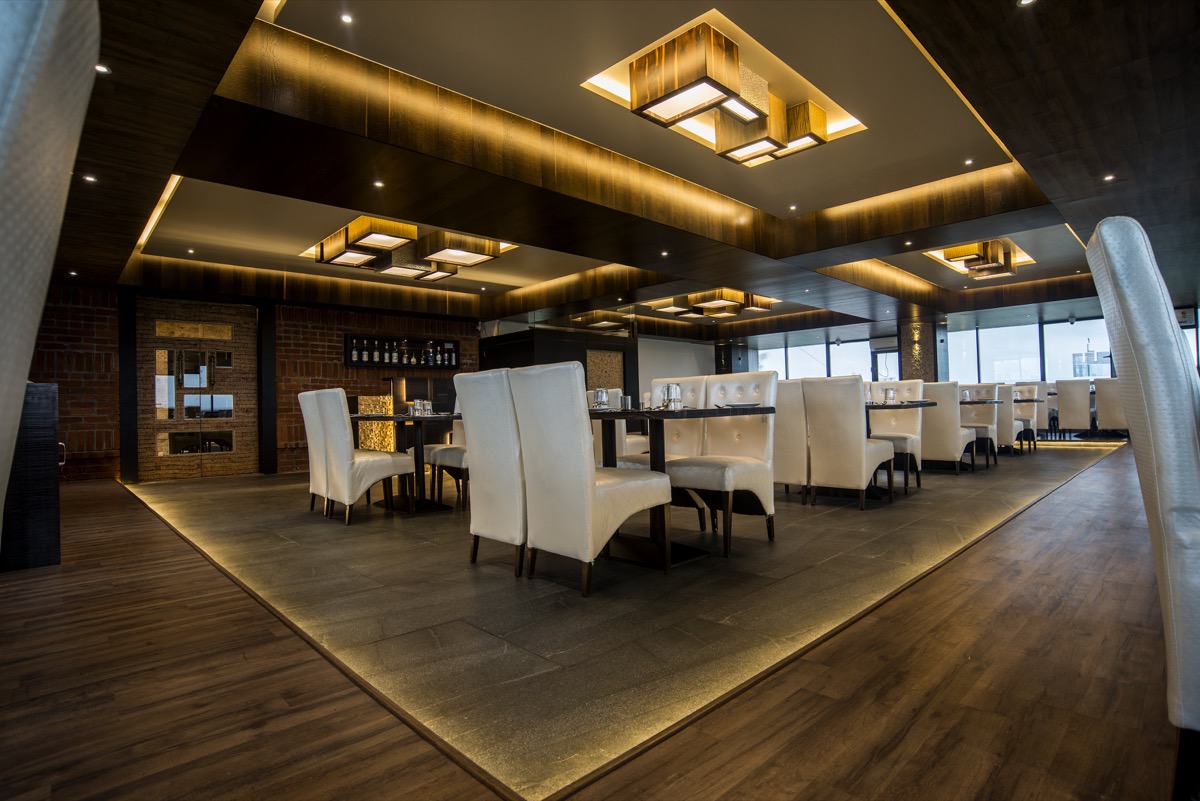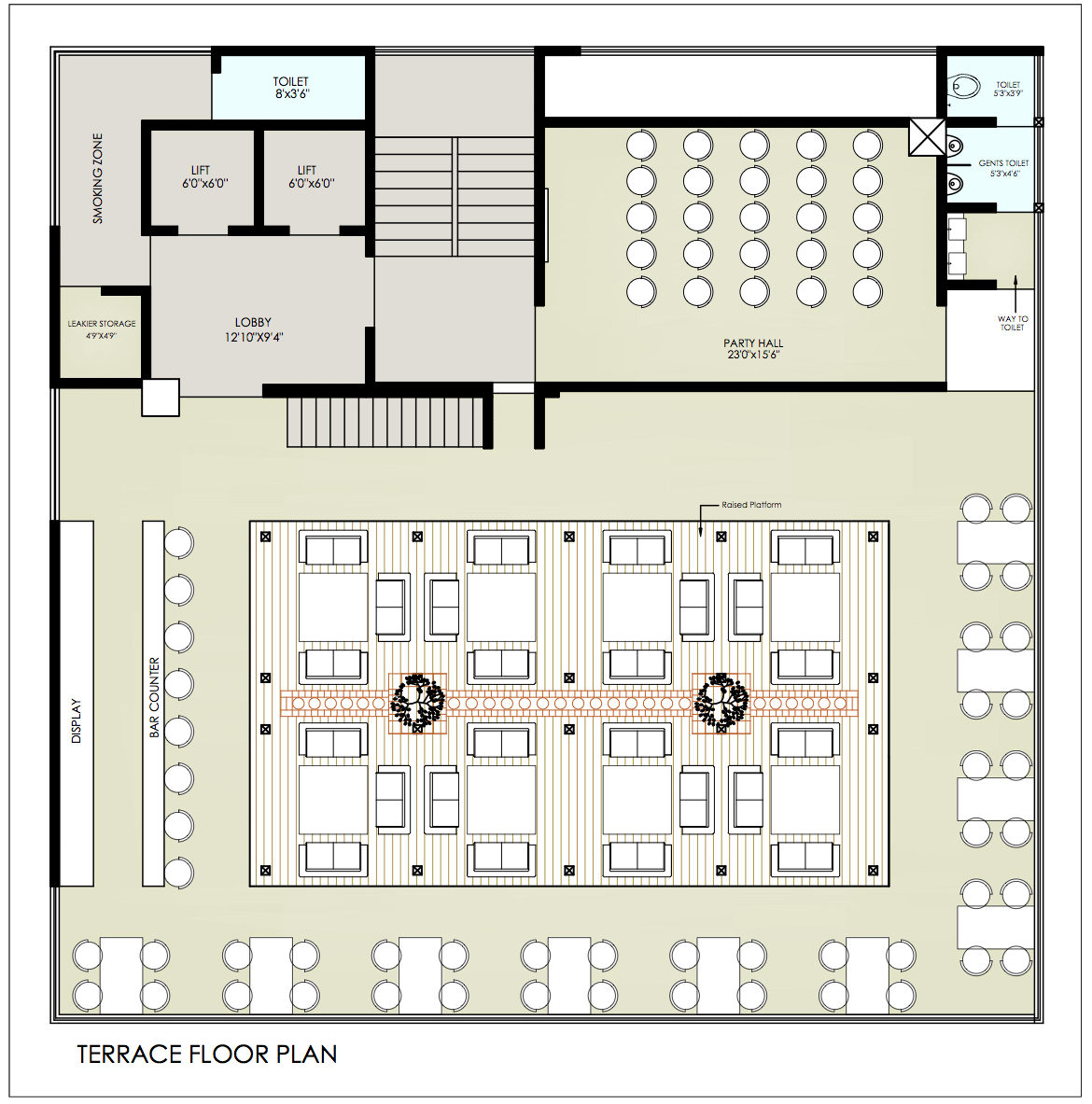
This rooftop lounge in Nashik, designed by Architect Dhananjay Mahale, taps into an inexhaustible visual resource as a source of inspiration – the sky
The Sapphire Sky Lounge, near Chai Tapri College Road, has been designed with a distinctly arboreal aesthetic. The lounge has a central raised deck with wooden pergola s overhead, creating small pockets of space within the open platform with potted plants and earthen urns.

On the lowered peripheral strip around the deck are tables for smaller gatherings, essentially providing private spaces for lone diners and couples without the customary physical barriers. The lounge has a rather high glass parapet, providing enclosure without any visual hindrance, the interrupted vista being the primary allure of the lounge.

The Layout


In stark counterpoint to the use of natural materials like wood and pebbles are the straight lines and minimalistic furniture in the seating space, creating a delicate balance, topped off by the vast expanse of sky acting as a vibrant ceiling to this space.
More Photographs
Text: Anupriya Saraswat
Design Team: Dhananjay Mahale, Sheetal Balte,Suhani Abaad
Photography: Ram Pawar, Nashik.
Enginner : Pankaj Rakibe














